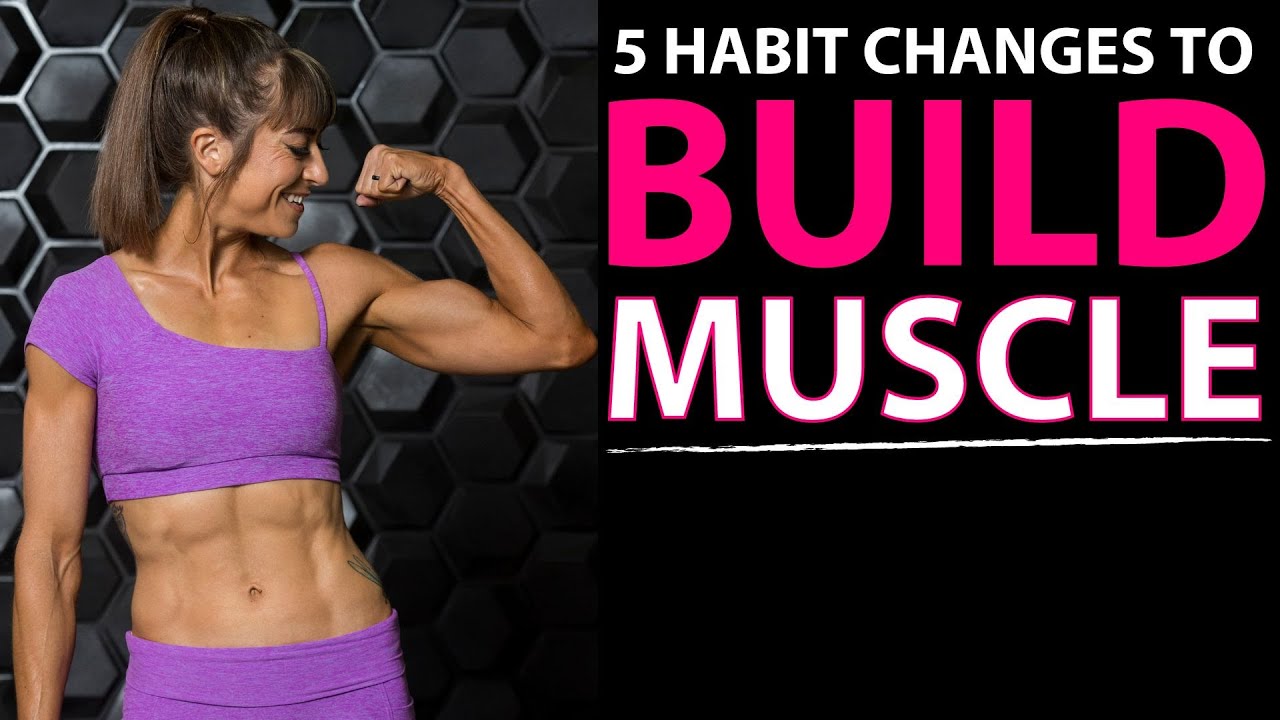
How to Lose Fat AND Gain Muscle At The Same Time (Step By Step)
What should I do first…I want to build muscle and lose fat?
The great thing is…
You CAN do both at the same time!
But how you do that may depend on where you are currently in your fitness and body composition journey.
While you can achieve both goals, you do need to set a primary focus as that will impact how you adjust your diet to start.
That’s why in this video I want to break down two different nutritional approaches to body recomp whether you want to lose fat as you retain and gain lean muscle or you want to gain muscle as you maintain your level of leanness while potentially getting even leaner!
And then I want to share a bonus workout tip to help you make sure your diet and workouts are working together.
Now if you’re thinking, “But I heard this wasn’t possible to lose fat and gain muscle at the same time.”
I’m going to let you in on a little secret…
It is possible.
It just takes embracing something that so many of us want to run from…
A habit so many of us have labeled boring and tedious and hard…

Tracking macros!
Now before you just write this off and click back saying tracking macros isn’t for you, I want to explain why it is so key and a SIMPLIFIED approach that can yield amazing results…
So that person that has said to you…“You can’t lose fat and gain muscle at the same time?”
It’s probably because they’ve always dieted by just cutting their calories super low.
They lost weight, but probably often have also lost muscle in the process.
They may have even gotten skinny without really looking more toned.
So they decide they want to build muscle to get more defined, so they eat in a surplus.
They end up, yes, putting on muscle. But also gaining fat.
So they then go back in a calorie deficit, repeating the same rollercoaster over and over again.
They may try a bigger deficit to lose faster or a bigger surplus to gain.
More is better right?
WRONG.
These bigger extremes may actually lead to their body composition becoming WORSE.
It is because while we can lose or gain weight simply by creating a calorie deficit or surplus, we aren’t controlling for what we are losing or gaining.
We aren’t controlling for fat loss or muscle mass retention.
This is something we CAN control by adjusting our macros.
And one macro in particular – our protein intake.
Increasing our protein intake is key.
High protein diets have been the only diets shown to not only help us retain lean muscle but even GAIN lean muscle mass while in a deficit.
And increasing your protein intake while in a surplus, due to the thermic effect of this macro, can help you avoid gaining unwanted fat while making it easier to build muscle due to the extra energy consumption.
So if you’ve struggled to embrace tracking macros in the past but really want to see those defined abs and arms…
It’s time to start tracking…at least your protein intake!
While in a calorie surplus, you may get away with slightly lower protein intakes than in a deficit as long as you are consuming enough carbs as well as instant fuel, going even higher while in a deficit due to the fact that you’re not really consuming enough of anything is key.
While you may consume about 30-35% of your calories from protein in a surplus, you will want to bump that to more like 40% of your calories from protein while in a deficit.
Starting out don’t worry where your carbs or fat fall.
Just first only focus on that protein intake.
Doing this alone will lead to amazing results and you’ll be surprised by how much you see those inches being lost and the definition popping through in your progress photos.
But that high protein really is what yields that body recomp magic.
So even if you’ve been resisting tracking macros, set that percentage to hit of your calories from protein and adjust the current foods you eat through small tweaks to see results.
Here’s a video that has 7 tips to help you easily bump protein!
But before you decide on exactly what protein percentage to use, you have to determine your calories.
Which should you be in – a calorie deficit or a surplus?
And that depends on your main focus.
While the goal is to lose fat as you gain muscle or gain muscle as you lose fat, you have to have a primary target.
What is your main focus?
This will be based on your current leanness level.
Are you currently basically as lean as you’d like and would like to add more muscle while just staying lean?
Or do you have more weight to lose but really want that muscle definition especially to stay strong as you get older?
If you’re already lean, consider a calorie surplus to focus a bit more on gaining muscle without any fluff.
If you’re not yet at your weight loss goal, consider a calorie deficit to start to help you lose fat without losing muscle.
Exactly how great a calorie surplus or deficit you create can also impact the results you get and be based on where you are in your fitness journey.
If you have more weight to lose, 500 calories is the most extreme you want to go with a deficit below your maintenance. But this is really aggressive and best only done if you have more than 50lbs to lose and aren’t as active.
Otherwise to help focus on losing fat without also costing you muscle, consider a deficit of only 100-300 calories at max. Think closer to 300 if you have over 15 pounds to lose and more like 100-200 if you have less than 15 pounds are are super active!
If you are already basically as lean as you’d like or even as thin as you’d like although you wouldn’t mind more definition, you will want to consider a small surplus.
Since you don’t really have energy stores to tap into, and you want to be able to push hard in your training to create that progression and stimulus for muscle growth, the extra calories will help you make sure you’re retaining that lean muscle.
Think 100-200 calories above maintenance unless you’re truly as lean as you’d like and really increasing your activity level – then go 300-400 calories.
Especially if you are just coming out of a deficit, slowly increase those calories only 100 at a time!
As essential as your diet is to losing fat and gaining muscle at the same time, the best results happen when our diet and workouts work together.
And without that stimulus for muscle growth in our training, we won’t see our nutritional changes fully pay off.
That’s why I wanted to share a bonus tip with you about what workouts are best to see body recomp.
Bonus Tip:
Now you may be thinking, do I need workouts for fat loss or for gaining muscle.
And I had a client even email me recently, “How do I know if a workout is for fat loss or building muscle?”
My email back said, “A good fat loss workout should be focused on building muscle.”
Muscle is metabolism magic.
Our training shouldn’t be about burning calories in our sessions and feeling destroyed.
It should be focused on building lean muscle.
We need that training stimulus for growth if our diet is going to have an impact.
And the more muscle we have, the more calories we will burn during the day, making it easier to lose fat.
Muscle stokes our metabolic fire and helps us avoid metabolic adaptations as we lean down.
So your training should be focused on building lean muscle no matter your aesthetic goal focus.
Sure if you love endurance sports, you don’t have to ditch them.
But even then strength training will only help you get stronger at what you love.
So focus on building strength in your training no matter what.
And for a great workout design to help you see those strength gains, check out my 6-12-25 protocol.
This is an amazing way to build muscle and strength no matter you age!
Using these tips you can build muscle and lose fat…or lose fat as you gain muscle.
You can see the body recomp you deserve but you need to TRACK.
What gets measured gets managed so we can adjust and see better results faster!
Ready to achieve amazing body recomp, losing that stubborn fat?




